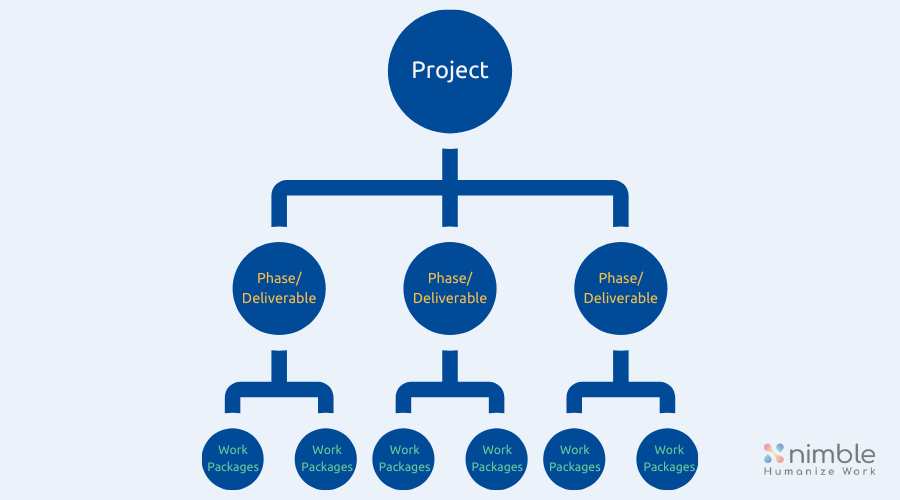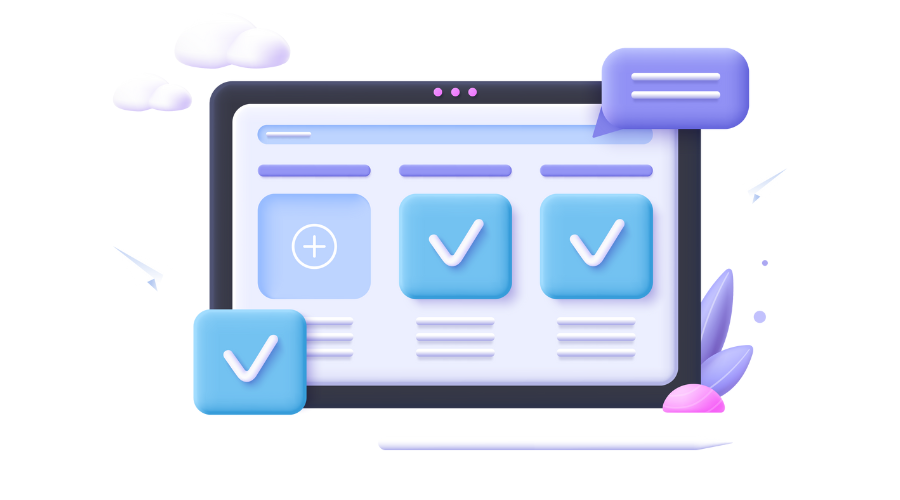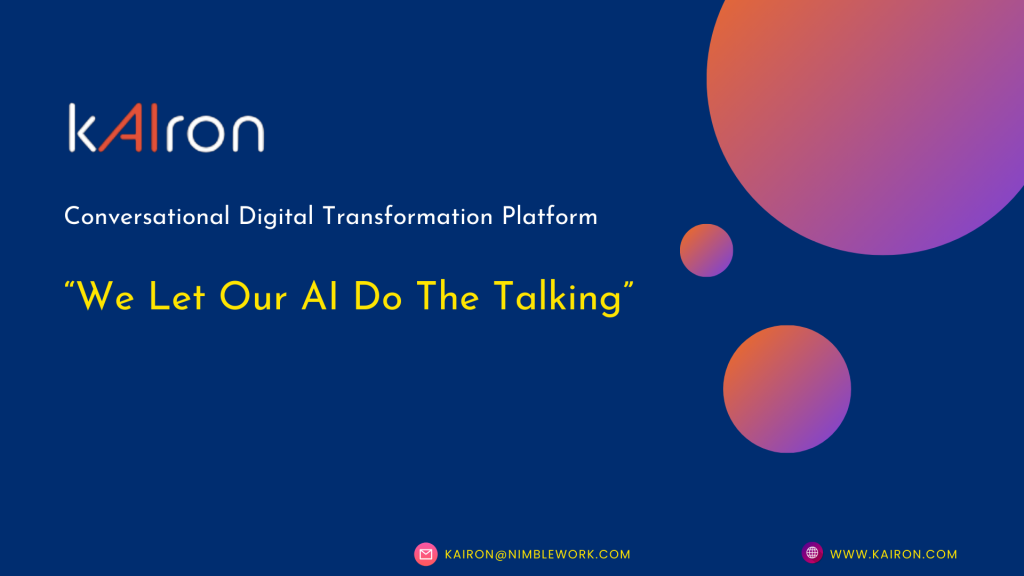Work Packages 101: Simplifying Complex Projects for Better Management
- 9 mins read
-
By Linsa Saji
- Updated on April 2, 2025
Managing a project is like assembling a complex puzzle—each piece must fit perfectly for the final picture to make sense. But what if some pieces were too large to handle effectively? What if they lacked clear edges, making it impossible to see where one ended and another began? This is where work packages come in.
A work package is more than just a collection of tasks; it’s a well-defined unit of work that enables clarity, ownership, and control in project execution. It acts as the building block of a Work Breakdown Structure (WBS), ensuring that projects don’t turn into chaotic, unwieldy behemoths. While many project managers acknowledge the importance of breaking down work, the real challenge lies in striking the right balance—making work packages detailed enough to provide control yet broad enough to remain meaningful.
Surprisingly, one of the most overlooked aspects of work packages is their impact on human behavior. When done right, they don’t just organize work; they shape accountability, influence motivation, and foster collaboration. A poorly defined work package can lead to confusion, rework, and scope creep—frustrating both teams and stakeholders. But a well-structured one can create a rhythm in execution, allowing teams to focus, deliver, and celebrate small wins that drive momentum.

In this guide, we’ll go beyond the textbook definitions and explore work packages through a real-world lens. We’ll uncover why they matter, how to structure them effectively, and how they fit into different project management methodologies. If you’ve ever struggled with unclear task ownership, shifting project scopes, or resource allocation headaches, understanding work packages could be the game-changer you’ve been looking for.
Work Package vs. Tasks vs. WBS Elements
One of the most common misconceptions in project management is confusing work packages with tasks or higher-level WBS elements. Understanding the distinctions between these elements is crucial for effective project planning:
| Element | Description | Level in WBS |
| WBS Element | A major project component or phase. It provides a broad category of work but lacks detailed execution steps. | Higher-level |
| Work Package | A self-contained unit of work with a defined scope, deliverables, and ownership. It is assignable and measurable. | Lowest level before tasks |
| Task | A specific action required to complete a work package. Tasks are the operational steps needed to deliver the work package. | Below work package |
In essence, a work package groups related tasks under one umbrella to ensure logical organization and better project visibility. Without well-defined work packages, projects risk becoming a collection of scattered tasks, making it difficult to track progress or hold team members accountable.
Why Work Packages Matter
Many project managers underestimate the strategic value of well-defined work packages. Beyond just breaking down work, they help:
- Prevent scope creep by keeping deliverables well-defined.
- Enhance accountability by assigning clear ownership.
- Improve tracking and reporting by providing measurable units of progress.
- Optimize resource allocation by ensuring work is appropriately distributed.
The Benefits of Work Packages
Breaking down a project into work packages is more than just an administrative exercise—it’s a strategic move that brings order to complexity. Well-structured work packages enable project managers to take control of large-scale initiatives without losing sight of individual contributions. Here’s how they add value:
Enhancing Project Control and Tracking
Every project manager knows that even the best-laid plans can go off track. Work packages create checkpoints within a project, allowing managers to measure progress with greater precision. By defining clear deliverables, dependencies, and ownership, work packages eliminate ambiguity, ensuring that every task is aligned with the project timeline. Instead of waiting for an entire phase to be completed, teams can track incremental progress, making it easier to identify risks, bottlenecks, or delays early on.
Improving Team Collaboration and Accountability
A common challenge in project execution is diffused responsibility—when everyone assumes someone else is accountable. Work packages eliminate this uncertainty by assigning a specific owner to each package. This fosters a culture of accountability, where team members clearly understand their responsibilities and can communicate effectively with stakeholders. The structured nature of work packages also facilitates cross-functional collaboration, as different teams can work in parallel while staying aligned with the overarching project goals.
Reducing Complexity and Improving Focus
Large projects often suffer from scope creep, where teams get overwhelmed by ever-expanding work. Work packages help combat this issue by providing manageable units of work that teams can focus on without distractions. Instead of tackling an entire project at once, teams can prioritize and complete work packages in a logical sequence, leading to higher efficiency and better quality outcomes.
Better Cost and Resource Management
Without structured work packages, estimating budgets and resources can feel like a guessing game. Work packages introduce greater financial discipline, as they require teams to allocate specific budgets, resources, and time estimates for each deliverable. This approach minimizes cost overruns and ensures that resources are deployed where they are needed most. It also provides a realistic picture of workload distribution, preventing team burnout and inefficient allocation of expertise.
Source: rolandwanner.com
What Is Included in a Work Package?
A well-defined work package is not just a name on a project plan—it’s a blueprint for execution. Each work package should include key elements that provide clarity on what needs to be done, by whom, and within what constraints. Here’s what should be included:
Scope and Deliverables
A work package must have a clearly defined scope that outlines the boundaries of what is to be accomplished. This prevents scope creep and ensures alignment with broader project objectives. Deliverables should be tangible outputs—whether it’s a document, a software module, a construction milestone, or any other measurable result.
Tasks and Dependencies
A work package consists of multiple tasks that need to be completed to achieve the deliverable. These tasks should be well-documented and structured logically. Dependencies between tasks must be identified to ensure smooth workflow management. Without clear dependencies, teams may work inefficiently or face unexpected roadblocks.
Resources and Budget
Resource allocation is a critical part of work package planning. Each package should specify the human resources, technology, tools, and materials required to complete it. Additionally, budget considerations should be outlined, including cost estimates for labor, materials, and contingencies. This financial visibility helps project managers stay within budget and avoid overspending.
Timeline and Milestones
Every work package must have a start date, an end date, and key milestones to measure progress. Milestones help teams track whether they are on schedule and give stakeholders insights into project health. Without well-defined timelines, work packages can linger indefinitely, leading to project delays.
Ownership and Accountability
A work package must have a single point of accountability—a person or team responsible for execution. Clear ownership prevents tasks from falling through the cracks and ensures that someone is monitoring progress, addressing roadblocks, and keeping the work package aligned with project objectives.
What Are the Characteristics of a Work Package?
A well-structured work package isn’t just a collection of tasks; it has distinct characteristics that make it an effective tool in project management.
Clearly Defined Boundaries
A work package has well-defined start and end points, preventing overlap with other work packages and ensuring clarity in execution. This clarity helps project managers assign work efficiently and measure progress objectively.
Specific Deliverables
Every work package must result in a tangible, measurable output. Deliverables should be specific enough to evaluate whether the work package has been completed successfully.
Independent Yet Connected
Work packages should be self-contained, meaning they can be assigned and completed independently. However, they should still be connected to the broader project goals, ensuring alignment and integration with other work packages.
Estimated Time and Cost
Each work package should have a realistic time estimate and budget allocation, helping project managers track performance and ensure cost efficiency.
Easily Assignable
A good work package should be small enough to be assigned to a single team or individual. This ensures accountability and makes monitoring more effective.
Five Essential Tips for Effective Work Package Management
Effective work package management is crucial for the success of any project. Here are five essential tips to ensure your work packages contribute positively to your project’s outcomes:
- Keep Work Packages Manageable: Strive for a balance in the size of your work packages. If they’re too large, they become unwieldy and challenging to manage; too small, and they may lead to unnecessary administrative overhead. Aim for work packages that can be completed within a reporting period, typically ranging from one to two weeks. This approach enhances clarity and facilitates timely progress tracking.
- Assign Clear Ownership: Each work package should have a designated owner responsible for its completion. Clear ownership fosters accountability and ensures that tasks are not overlooked. When team members know their specific responsibilities, it reduces confusion and promotes efficient workflow.
- Align with Project Objectives: Ensure that every work package directly contributes to the overall project goals. This alignment guarantees that all efforts are purposeful and support the project’s strategic direction. Regularly revisiting the connection between work packages and project objectives helps maintain focus and coherence throughout the project lifecycle.
- Utilize Work Packages for Risk Management: Breaking down the project into smaller work packages allows for early identification and mitigation of potential risks. By assessing each package individually, you can pinpoint vulnerabilities and implement proactive measures to address them, thereby safeguarding the project’s success.
- Regularly Review and Adjust: Projects are dynamic, and flexibility is key. Regularly reviewing work packages enables you to adapt to changes, reallocate resources as necessary, and ensure that the project remains on track. This iterative process helps in accommodating evolving project requirements and external factors effectively.
Integrating Work Packages into Various Project Management Methodologies
Work packages are versatile components that can be effectively integrated into different project management methodologies, enhancing structure and clarity. Here’s how they fit into various approaches:
Waterfall Approach
In the traditional Waterfall methodology, work packages serve as the foundation for structured project planning. The project is divided into distinct phases, each comprising specific work packages that must be completed sequentially. This clear, linear progression ensures thorough planning and execution, with each phase building upon the previous one.
Agile Approach
Agile methodologies emphasize flexibility and iterative progress. In this context, work packages can be aligned with sprints or iterations, allowing teams to focus on delivering small, manageable units of work within short timeframes. This approach facilitates adaptability and continuous improvement, as teams can quickly respond to feedback and evolving project needs.
Hybrid Approach
Organizations that blend Agile and Waterfall methodologies can leverage work packages to achieve a balance between structure and flexibility. By defining work packages that accommodate both sequential and iterative processes, teams can tailor their project management approach to suit specific project requirements, thereby optimizing efficiency and effectiveness.
Overcoming Common Challenges in Work Package Management
While work packages are instrumental in project management, certain challenges can arise in their implementation. Here are common issues and strategies to address them:
Defining Work Packages Too Broadly or Too Narrowly
Striking the right balance in the scope of work packages is essential. Overly broad packages can lead to ambiguity and difficulty in tracking progress, while excessively narrow packages may result in micromanagement and administrative burden. To overcome this, ensure that each work package is of a manageable size, with clearly defined deliverables and timelines.
Lack of Clear Ownership and Responsibilities
Ambiguity in ownership can cause tasks to be overlooked or duplicated. Assigning clear roles and responsibilities for each work package ensures accountability and streamlines execution. Regular communication and documentation of these assignments can further enhance clarity and commitment.
Ensuring Alignment with Project Goals
Work packages that do not align with the overall project strategy can lead to wasted resources and efforts. Regularly reviewing and validating that each work package contributes to the project’s objectives helps maintain strategic coherence and ensures that all tasks are purposeful and value-driven.
Conclusion
Work packages are an essential tool in project management, offering a structured way to break down complex projects into manageable, accountable, and trackable units of work. By clearly defining scope, ownership, resources, and timelines, they ensure that teams work efficiently and stay aligned with project objectives.
From improving project control and tracking to enhancing collaboration and risk management, the benefits of work packages extend beyond simple task division. They provide clarity, structure, and strategic alignment, ensuring that every piece of the project contributes to the bigger picture.
However, effectively managing work packages requires thoughtful planning and continuous refinement. Project managers must balance scope, avoid overcomplicating packages, and ensure that every work package is tied to a clear deliverable. Whether working in Agile, Waterfall, or hybrid methodologies, organizations that master the art of work package management will find themselves executing projects with greater efficiency, precision, and success.
Ultimately, successful project execution is not just about completing tasks—it’s about ensuring that every work package delivers real value and moves the project closer to its goals. By applying best practices in work package management, teams can navigate complexity with confidence, optimize resources, and drive impactful project outcomes.
Nimble simplifies work package management with intuitive planning, real-time tracking, and seamless collaboration tools. Sign up for a free trial today and experience a smarter way to manage your projects!
Share the Knowledge
About Author:
Linsa Saji
Simplifying Project Management!
Explore Nimble! Take a FREE 30 Day Trial
PM 101
Work Packages 101: Simplifying Complex Projects for Better Management
Learn what work packages are in project management, how they improve project structure, and best practices for effective execution.
Marketing Metrics KPIs: The Ultimate Guide to Measuring Success
Unlock the power of marketing metrics and KPIs with this ultimate guide. Learn how to track, analyze, and optimize your campaigns for measurable success.
What is Digital Marketing? And Why is it Important for a Business?
Learn what digital marketing is and why it’s essential for businesses. Explore key strategies, benefits, and how it helps brands grow in the digital age.
How to Create a Digital Marketing Plan & Execute it with Nimble?
Learn how to create a digital marketing plan and execute it efficiently with Nimble. Discover strategies, tools, and best practices to drive marketing success.
How to Plan and Track Digital Marketing Campaigns?
Learn how to plan and track digital marketing campaigns effectively with key strategies, tools, and tips to ensure successful execution and measurable results.
Top 10 Tips for Social Media Management in 2025
Discover the top 10 tips for mastering social media management, including strategies for engagement, content creation, and staying ahead of evolving trends.
What is a Contingency Plan? 5 Steps to Create One
Learn what a contingency plan is and follow five key steps to create one for your project. Ensure your team is prepared to handle unexpected challenges and minimize risks.
What is a RACI Chart? A Complete Guide for Project Managers
Learn what a RACI chart is, how it clarifies roles and responsibilities in project management, and how to create one for your team to improve collaboration and accountability.





